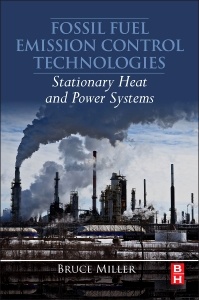Description
Fossil Fuel Emissions Control Technologies
Stationary Heat and Power Systems
Author: Miller Bruce G.
Language: English
Subjects for Fossil Fuel Emissions Control Technologies:
Support: Print on demand
Description
/li>Contents
/li>Readership
/li>Biography
/li>Comment
/li>
Chapter 1: Regulations
Chapter 2: Fuel Switching
Chapter 3: Particulate Matter Formation and Reduction Technologies
Chapter 4: Sulfur Oxides Formation and Reduction Technologies
Chapter 5: Nitrogen Oxides Formation and Control
Chapter 6: Mercury Emissions Reduction
Chapter 7: Acid Gases Formation and Reduction Technologies
Chapter 8: Organic HAPs Formation and Reduction Technologies
Chapter 9: Enhanced Combustion Technologies
Chapter 10: GHG Emissions Reduction Technologies
- Provides numerous diagrams and examples to emphasize pollution formation mechanisms
- Coverage of critical control technologies and their application to real-world solutions
- Explains Sulfur Oxides, Acid Gases, Nitrogen Oxides Formation and Organic HAPs, Control and Reduction Technologies
- Covers Particulate Matter and Mercury Emissions Formation and Reduction Technologies




